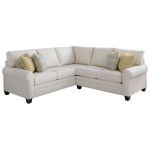Moving a Couch Through a Door: A Comprehensive Guide
Moving a couch, particularly through a standard-sized doorway, can be a challenging endeavor. Successful navigation necessitates careful planning, assessment, and execution. This article provides a detailed guide outlining the essential steps and techniques required to safely and efficiently move a couch through a doorway.
Pre-Move Assessment and Preparation
Before attempting to move the couch, a thorough assessment of the situation is paramount. This involves measuring the couch, the doorway, and the pathway leading to and from the door. Accurate measurements are crucial for determining if the couch will fit through the doorway and identifying potential obstacles.
Begin by measuring the width, height, and depth of the couch at its widest points. It is important to account for any protruding arms, legs, or cushions that could obstruct movement. Next, measure the width and height of the doorway. Pay attention to the doorframe, as it typically reduces the available space compared to the door opening itself. Consider also the available clearance on both sides of the doorway; a narrow hallway or tight corner can significantly impede maneuverability.
Once the measurements are obtained, compare the couch dimensions to the doorway dimensions. If the couch’s width or height exceeds the doorway’s dimensions, further assessment is required to determine if disassembly or alternative maneuvering techniques are necessary. If the measurements suggest that the couch should fit, allow for a few inches of buffer space to account for potential errors in measurement and to facilitate easier handling.
Preparation of the area is equally important. Remove any obstacles from the pathway, including rugs, furniture, and decorations. Clear the doorway of any obstructions, such as doorstops or welcome mats. Protect the floor and walls from scratches and damage by using furniture pads, blankets, or cardboard. These protective materials should be placed along the path the couch will travel, especially in areas where the couch might come into contact with walls or floors.
Gather necessary moving equipment. This may include furniture sliders, moving blankets, straps, and a dolly. Furniture sliders can be placed under the legs of the couch to reduce friction and facilitate easier movement on hard surfaces. Moving blankets provide protection against scratches and dents. Straps can be used to secure the couch to a dolly or to provide added leverage during lifting and maneuvering. A dolly can be particularly useful for moving heavier couches over longer distances.
Evaluate the assistance required. Moving a couch is typically a two-person job, and larger or heavier couches may require three or more individuals. Enlisting the help of capable individuals ensures a safer and more efficient move. Before starting, communicate the plan clearly to everyone involved, assigning specific roles and responsibilities. This will help to coordinate movements and prevent confusion during the move.
Disassembly and Maneuvering Techniques
If the initial assessment reveals that the couch is too large to fit through the doorway, disassembly may be necessary. Many couches are designed with detachable legs, arms, or back cushions. Removing these components can significantly reduce the overall dimensions of the couch, making it easier to navigate tight spaces.
Before disassembling any part of the couch, consult the manufacturer’s instructions, if available. If instructions are not available, carefully examine the couch for any visible screws, bolts, or brackets that secure the components. Use appropriate tools, such as screwdrivers, wrenches, or pliers, to loosen and remove these fasteners. Store all removed hardware in a labeled bag to prevent loss and to facilitate reassembly.
Once the detachable components have been removed, reassess the remaining dimensions of the couch. If the couch still does not fit through the doorway, consider removing the fabric covering to access the frame. This is a more advanced technique that should only be attempted if absolutely necessary and with caution, as it can potentially damage the upholstery. If removing the fabric covering, take photographs or notes to guide the reassembly process.
With the couch disassembled to the extent necessary, focus on maneuvering it through the doorway. The “pivot” technique is frequently employed, particularly when dealing with tight clearances. This involves tilting the couch on its end and rotating it to align with the doorway. This technique is more effective when the height of the doorway exceeds the depth of the couch.
To execute the pivot technique, position the couch near the doorway, with one end facing the opening. Tilt the couch onto its end, ensuring that it is stable and secure. Carefully pivot the couch, rotating it until it is aligned with the doorway. Slowly and carefully push the couch through the doorway, ensuring that it does not scrape against the doorframe or walls. Constant communication between the individuals involved is essential to coordinate movements and prevent damage.
Another useful technique involves using furniture sliders. Place the sliders under each leg of the couch to reduce friction and facilitate easier movement. This is particularly helpful on hard surfaces such as tile or hardwood floors. Once the sliders are in place, carefully push the couch towards the doorway, ensuring that it remains stable and balanced. Guide the couch through the doorway, making small adjustments as needed to avoid obstacles.
Safety Considerations and Problem Solving
Safety is paramount throughout the entire moving process. Wear appropriate safety gear, including gloves and closed-toe shoes, to protect against injuries. Ensure that the path is clear of any trip hazards. Lift with the legs, not the back, to prevent back strain. Communicate clearly with everyone involved to coordinate movements and avoid accidents.
If the couch becomes stuck in the doorway, avoid forcing it. Applying excessive force can damage the couch, the doorframe, or both. Instead, carefully assess the situation to identify the point of obstruction. Try adjusting the angle of the couch, or consider removing any remaining detachable components. If necessary, use a pry bar to gently lift or shift the couch, but be careful not to damage the surrounding surfaces.
In cases where the couch is particularly heavy or unwieldy, a furniture dolly can be invaluable. Place the couch on the dolly, ensuring that it is securely fastened using straps or ropes. Carefully maneuver the dolly towards the doorway, taking care to avoid obstacles. Guide the dolly through the doorway, making small adjustments as needed. A spotter should be positioned to ensure that the dolly remains stable and to prevent it from tipping over.
If the doorway is significantly narrower than the couch, alternative solutions may need to be considered. One option is to temporarily remove the doorframe. This will provide additional clearance, but it is a more involved process that may require specialized tools and skills. Another option is to hire professional movers. Professional movers have the experience and equipment necessary to handle even the most challenging moving situations.
Once the couch has been successfully moved through the doorway, take a moment to rest and reassess the situation. Ensure that the couch is positioned in its desired location and that it is stable and secure. If any disassembly was required, carefully reassemble the couch, referring to any photographs or notes that were taken during the disassembly process. Dispose of any packing materials or debris. Conduct a final inspection of the area to ensure that no damage has occurred to the floors, walls, or furniture.
Moving a couch through a doorway requires careful planning, assessment, and execution. By following the steps outlined in this article, individuals can increase their chances of success and minimize the risk of damage or injury. While the process can be challenging, the satisfaction of successfully navigating a bulky piece of furniture through a tight space is rewarding.

How To Get A Couch Through Doorway 5 Tips And Tricks Xtraspace Self Storage Business

What To Do When Furniture Won T Fit Through The Door 7 Solutions

Getting A Sofa Through Door The Right Way Fantastic Services

How To Move A Couch Through Narrow Door

How To Get A Sofa Through Door Moving Heavy Furniture

How To Get Your Big Sofa Through The Door

Moving A Couch Through Small Door Austin Movers In Texas

Ways To Squeeze A Sofa Through Narrow Entryway Fresh50

How To Move A Couch Through Narrow Door

What To Do If A Couch Won T Fit Through Your Door Xtraspace Self Storage Business








